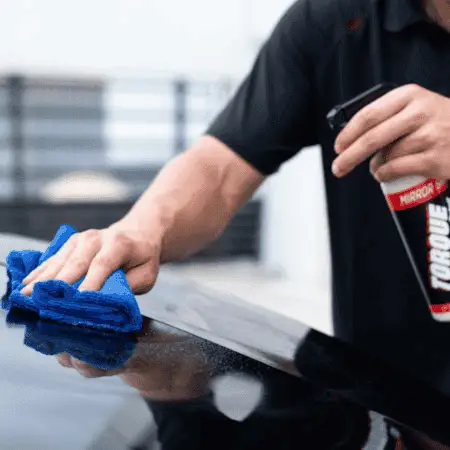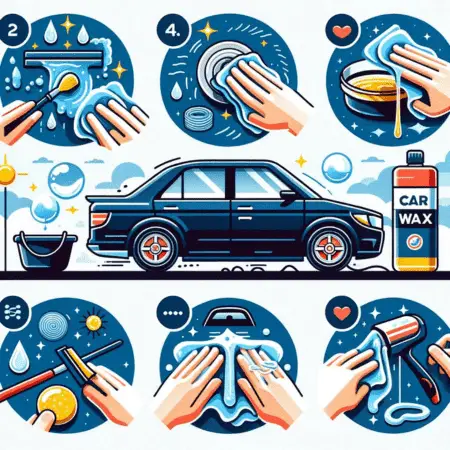Cars are not just a mode of transportation; for many, they’re a significant investment and a source of pride. Thus, maintaining their appearance and integrity is a priority for car owners. Among the various maintenance practices, waxing stands out as a critical step for preserving the vehicle’s aesthetic and protective layer. Wax plays a pivotal role in automotive care, yet its importance is often underestimated by many car owners. At its core, car wax is a substance that, when applied to the exterior of a vehicle, provides a protective layer on the paint. Many people are confused about the frequency of applying the wax on the car. In this article, we will discuss “Should I wax my car after every wash?” So keep on reading to find out the answer.
Should I wax my car after every wash? Whether you should wax your car after every wash depends on various factors such as the type of wax used, the frequency of washing, and environmental conditions. Generally, waxing after every wash may be excessive and unnecessary. If you use a high-quality, long-lasting wax, applying it every 2-3 months should suffice to maintain a protective layer and a glossy finish.
However, if your car is frequently exposed to harsh elements like sunlight, bird droppings, or pollutants, more frequent waxing may be beneficial.
Regularly washing your car with a gentle soap and using proper drying techniques can contribute to preserving the paint and finish, reducing the need for frequent waxing.
It’s all about balance between protection and practicality based on your specific circumstances.

What is Car Wax and Why Use It?
Car wax is a product designed to protect and enhance the appearance of a vehicle’s paint and clear coat. It typically contains natural or synthetic waxes, as well as various additives that provide a protective layer over the paint surface. The primary reason to use car wax is to create a barrier against environmental contaminants, such as UV rays, bird droppings, tree sap, and road salts, which can damage the paint over time. Waxing also helps to repel water, reducing the potential for water spots and corrosion. The application of car wax can enhance the car’s shine, providing a glossy and polished finish. Regular waxing not only preserves the aesthetic appeal of the vehicle but also contributes to the longevity of its paintwork by safeguarding it against the elements.
should I wax my car after every wash?
Waxing your car after every wash is a common consideration for car owners seeking to maintain their vehicle’s appearance and protect the paint. However, the decision to wax frequently depends on various factors that influence the effectiveness and necessity of the waxing process.
1- Type of Wax Used:
The type of wax you use plays a crucial role in determining the frequency of application. Natural carnauba waxes generally provide a deep and warm glow but may require less frequent application compared to synthetic or hybrid waxes. Understanding the characteristics of the chosen wax helps in establishing an appropriate waxing schedule.
2- Frequency of Washing:
The frequency with which you wash your car is a key factor in deciding whether to wax after every wash. If you wash your car frequently, using a high-quality, long-lasting wax may reduce the need for frequent waxing. Overwaxing can lead to product buildup and may not provide additional benefits, making it important to strike a balance between washing and waxing.
3- Environmental Conditions:
The environmental conditions your car is exposed to play a significant role in determining the waxing frequency. Harsh elements such as intense sunlight, bird droppings, or road salt can deteriorate the paint faster, necessitating more frequent waxing for added protection.
4- Quality of Car Wash Products:
Using high-quality car wash products can contribute to the longevity of the wax and reduce the need for frequent reapplication. Gentle soaps and proper washing techniques help preserve the wax layer, making it more effective between applications.
5- Practical Considerations:
Waxing your car after every wash may not always be practical in terms of time and effort. Assessing the condition of the existing wax layer and the cleanliness of the car after each wash can help determine whether an immediate wax application is necessary or if it can be postponed to a later time.
Must Read: Will Vinegar Damage Car Paint? Potential Risks Of Using Vinegar
Pros of Waxing After Every Wash
Waxing your car after every wash can seem like a rigorous routine, but it comes with a set of advantages that are hard to overlook. Here are some of the key benefits:
- Enhanced Protection from the Elements: Each layer of wax applied adds an extra barrier against UV rays, salt, dirt, and pollutants, minimizing the risk of oxidation and paint degradation.
- Maintaining a High-Gloss Finish: Regular waxing ensures that your vehicle maintains a consistent, glossy sheen, enhancing its aesthetic appeal and potentially increasing its resale value.
- Prevention of Dirt and Grime Buildup: A waxed surface is smoother, making it harder for dirt and grime to adhere to the paint. This can make subsequent washes easier and less time-consuming, as contaminants can be washed away more readily.

Cons of Waxing After Every Wash
While frequent waxing has its merits, there are also valid reasons to consider a more measured approach:
- Potential for Wax Buildup: Applying wax too often without proper buffing can lead to buildup, which can dull the paint’s finish rather than enhance it. This can also make the wax harder to remove and reapply effectively in the future.
- Time and Cost Considerations: Waxing your car requires a significant investment of time and, depending on the product used, money. For many car owners, finding the balance between protection and practicality is key.
- Diminishing Returns: After a certain point, layering more wax doesn’t necessarily equate to more protection or shine. The law of diminishing returns applies here, where each additional layer of wax offers fewer and fewer benefits.
Must Read
- Why Does My Coolant Reservoir Keep Emptying?
- Why Red Light Blinking In Car And What To Do
- Benefits Of Removing Thermostat In A Car ( Pros And Cons )
Conclusion
Maintaining your car’s wax layer is not just about aesthetics; it’s an essential part of vehicle upkeep that protects the paint and, by extension, the value and longevity of your car. Whether you choose to wax after every wash or follow a less frequent schedule, the most important aspect is consistency and attention to detail. By understanding your vehicle’s needs and the impact of the environment it operates in, you can tailor your waxing routine to provide the best protection and shine.
